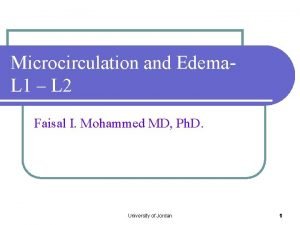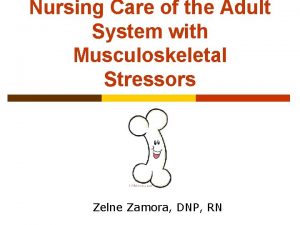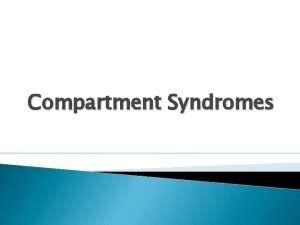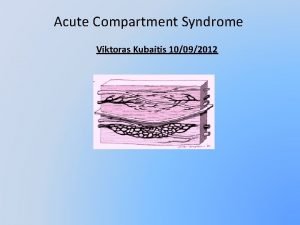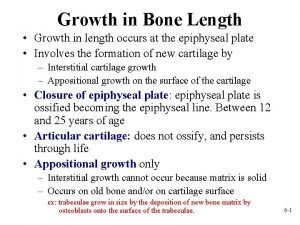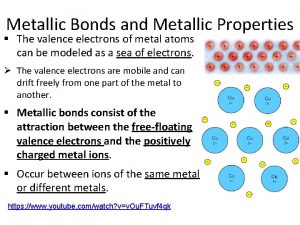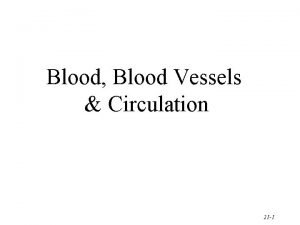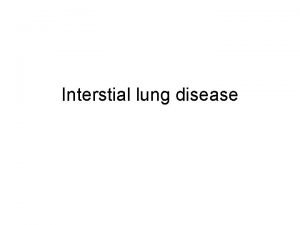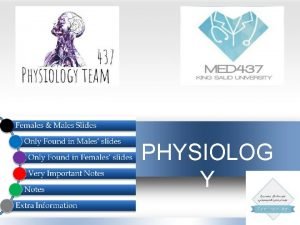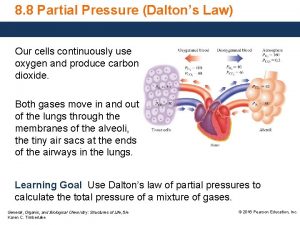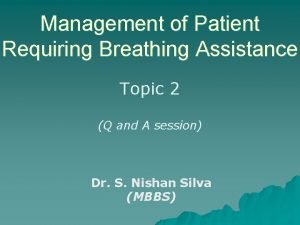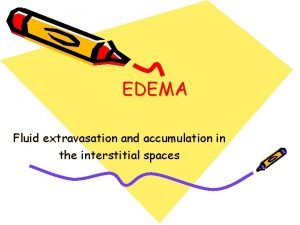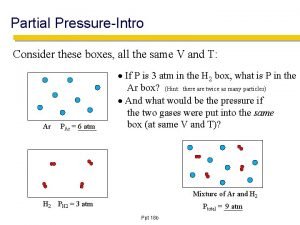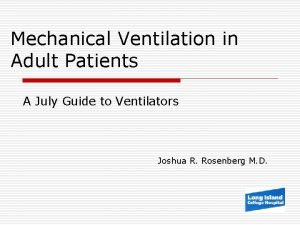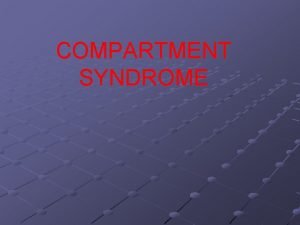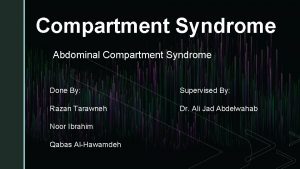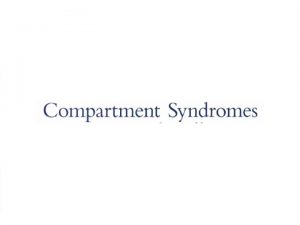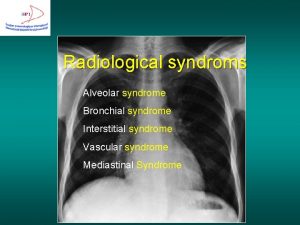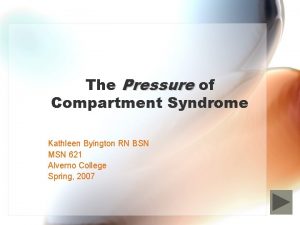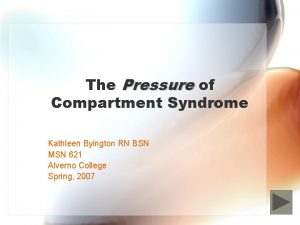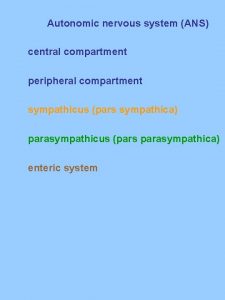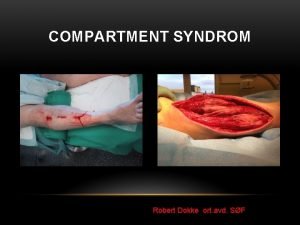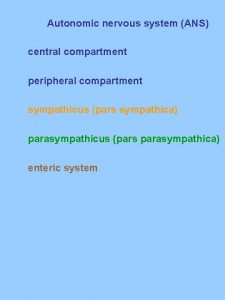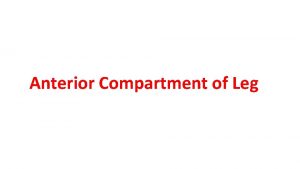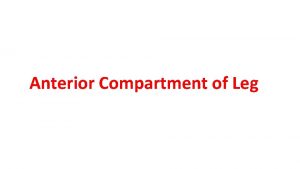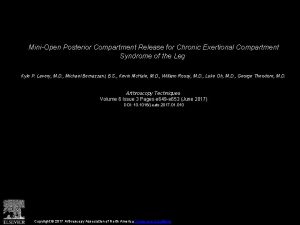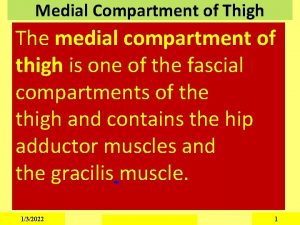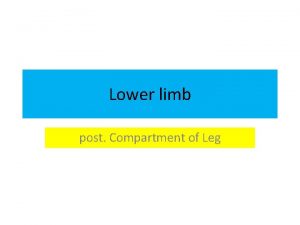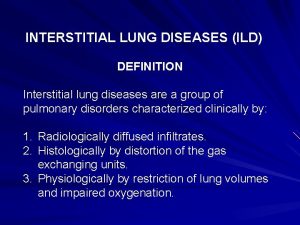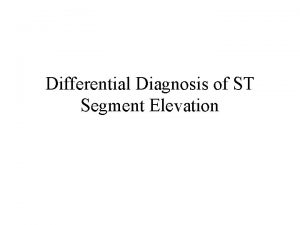Compartment syndrome elevation of the interstitial pressure in





































- Slides: 37


Compartment syndrome ภาวะทความดนภายในชองปดเพมสงขนมากจนกระทงรบกว นตอระบบ ไหลเวยนเลอด และการทางานของเนอเยอออนภายในชองนนๆ (elevation of the interstitial pressure in a closed osteofascial compartment that results in microvascular compromise) สวนใหญพบท Anterior and deep posterior compartments of the leg Volar compartment of the forearm







สาเหตของ compartment syndrome สาเหตสวนใหญ (most common causes) • Fractures • Soft tissue trauma • Arterial injury • Limb compression during altered consciousness • Burns

PATHOPHYSIOLOGY

PATHOPHYSIOLOGY Significant muscle necrosis can occur in patients with normal blood flow if intracompartmental pressure is increased to more than 30 mm. Hg for longer than 8 hours. Higher pressures have been shown to cause greater compromise of neuromuscular viability in shorter periods of time.

CLINICAL EVALUATION 5 Ps • ปวด (pain) • อมพาต (paralysis) • ชา (paraesthesia) • ชพจร (pulses and/or capillary refill) • ซด (pallor)และอณหภม (temperature)

CLINICAL EVALUATION Absence of clinical findings associated with compartment syndrome is more useful for excluding the diagnosis than the presence of findings is for confirming the diagnosis.







Investigation If compartment syndrome is suspected an adequate examination cannot be performed, pressure levels should be measured

Investigation Noninvasive methods • Ultrasonography measure submicrometer displacement of the fascia wall caused by volume expansion of the muscle compartment (sensitivity 77% , specificity 93%) • Infrared imaging determine temperature diferences between the proximal and distal skin surfaces to help make the diagnosis of compartment syndrome

Investigation Invasive methods • Commercially available pressure monitor • Arterial line manometer • Whitesides three-way stopcock apparatus • Wick monitor

Commercially available pressure monitor

Arterial line manometer

Whitesides three-way stopcock apparatus

Wick monitor

TREATMENT Compartmental pressures are greater than 30 mm Hg in the presence of clinical findings, immediate fasciotomy is indicated In patients with major disruption of the arterial circulation or circumferential full- thickness burns, fasciotomy should be performed at the time of initial surgery




Fasciotomy

Fasciotomy

Fasciotomy




Thank You
 Oncotic pressure in capillaries
Oncotic pressure in capillaries Impermeance
Impermeance Nursing management of patient with cast ppt
Nursing management of patient with cast ppt Mobile wad of henry
Mobile wad of henry Compartment syndrome 7p
Compartment syndrome 7p Epiphyseal plate
Epiphyseal plate Interstitial impurity atom
Interstitial impurity atom Tetrahedral interstitial site
Tetrahedral interstitial site Interstitial alloy
Interstitial alloy Chapter 26 fluid electrolyte and acid-base balance
Chapter 26 fluid electrolyte and acid-base balance Steel interstitial alloy
Steel interstitial alloy Ecf icf and interstitial fluid
Ecf icf and interstitial fluid Interstitial velocity
Interstitial velocity Peristalsis
Peristalsis Fenestrations
Fenestrations Epiphyseal line
Epiphyseal line Darcy equation for radial flow
Darcy equation for radial flow Extracellular fluid and interstitial fluid
Extracellular fluid and interstitial fluid Appositional and interstitial growth of cartilage
Appositional and interstitial growth of cartilage Vacancy defect and interstitial defect
Vacancy defect and interstitial defect Acute interstitial nephritis urine findings
Acute interstitial nephritis urine findings How does water go through your body
How does water go through your body Interstitial fluid vs extracellular fluid
Interstitial fluid vs extracellular fluid Lung disease
Lung disease Tightly attached ceiling
Tightly attached ceiling Water balance regulation
Water balance regulation Sanders roofing
Sanders roofing Interstitial pattern
Interstitial pattern Types of edema
Types of edema Pressure support vs pressure control
Pressure support vs pressure control Windkraft horizontalläufer
Windkraft horizontalläufer How to find partical pressure
How to find partical pressure Pressure support vs pressure control
Pressure support vs pressure control Hydrostatic oncotic pressure
Hydrostatic oncotic pressure Partial pressure formula
Partial pressure formula What is ppeak in ventilator
What is ppeak in ventilator Bernoulli equation pipe flow
Bernoulli equation pipe flow Continuous bedside pressure mapping
Continuous bedside pressure mapping
